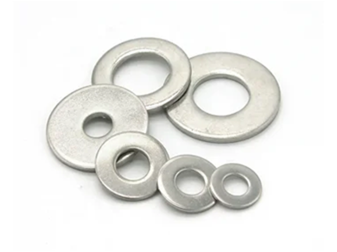Dec . 13, 2024 17:45 Back to list
anchor bolt sizes mm
Understanding Anchor Bolt Sizes in Millimeters
Anchor bolts are essential components in construction and engineering projects, providing the necessary stability and support for securing structures to their foundations. These bolts come in various sizes and shapes, and understanding their dimensions, particularly in millimeters, is crucial for engineers, architects, and construction workers.
What are Anchor Bolts?
Anchor bolts are fundamental fasteners used to attach structures to concrete. They can be utilized in various applications, including securing building frames, bridges, and other heavy equipment to a foundation. Their primary function is to provide tensile strength and to resist the forces exerted by loads, as well as earthquake and wind forces.
Common Sizes of Anchor Bolts
Anchor bolts are available in a variety of sizes, typically specified by their diameter and length. While anchor bolts can be fabricated to meet specific project requirements, standard sizes often range from M8 (8 mm in diameter) to M30 (30 mm in diameter) or larger.
1. Diameter The diameter of an anchor bolt significantly influences its load-bearing capacity. In millimeters, commonly used diameters include - M8 (8 mm) - M10 (10 mm) - M12 (12 mm) - M16 (16 mm) - M20 (20 mm) - M24 (24 mm) - M30 (30 mm) These diameters refer to the measurement of the bolt's shaft and determine how well the bolt can be embedded within the concrete.
2. Length The length of anchor bolts can also vary widely, usually starting from 100 mm and exceeding lengths of 1000 mm, depending on the particular application and requirements of the project. Ensuring the right length is vital to ensure proper embedment in concrete, which is crucial for achieving the necessary structural support.
3. Thread Type Most anchor bolts feature a threaded shank, allowing for the secure attachment of nuts and washers. The threading can vary in pitch and form, depending on the size and type of bolt used. Standard thread specifications should be adhered to for compatibility with corresponding nuts.
anchor bolt sizes mm

Choosing the Right Anchor Bolt Size
Selecting the appropriate anchor bolt size requires careful consideration of several factors, including
1. Load Requirements Determine the loads that the anchor bolts will bear, including both static and dynamic stress. This evaluation will help choose the correct diameter and length.
2. Concrete Strength The strength of the concrete in which the bolts will be embedded also plays a critical role in sizing. Higher-strength concrete may allow for smaller or shorter bolts, whereas lower-strength concrete may necessitate larger or deeper bolts to achieve equivalent strength.
3. Environmental Conditions In corrosive environments, using anchor bolts made from stainless steel or with special coatings can be critical. The size and thickness of the protective layer can affect overall dimensions, so factoring this into the size calculation is essential.
4. Building Codes and Standards Always consult relevant building codes and standards when selecting and installing anchor bolts. Compliance with national and local codes ensures not only the safety and integrity of the structure but also adherence to legal requirements.
Conclusion
Understanding anchor bolt sizes in millimeters is vital for ensuring the safety and stability of construction projects. By considering factors such as load requirements, concrete strength, environmental conditions, and compliance with building codes, engineers can select the appropriate anchor bolt sizes to meet the demands of their specific applications. Proper selection and installation of anchor bolts contribute significantly to the longevity and durability of structures, making them an indispensable part of modern construction and engineering practices.


